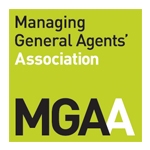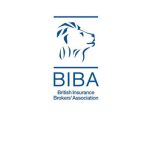Tangled Web
In a modern business it’s pretty much a certainty, whatever your niche, you’ll need a website. Being online makes you more competitive and opens-up new markets at home and abroad. What business doesn’t want access to 4.1 billion internet users? Couple this extraordinary number with the more down-to-earth statistic that web-connected small to medium sized businesses (SME’s) have 22% higher revenue growth than those not using the net and a compelling argument to get on on-line is soundly made. What you might not know is how to protect your website design, content, its presence and avoid infringing the rights of others. Don’t get into a tangle. There are some simple rules to follow and traps to avoid.
But I paid for it!
Alarming as it sounds, just because you paid for the website development doesn’t mean you own it. Ownership and your intellectual property rights (IPR) should be carefully considered and protected before you design, build and populate your website. The general position in law is that you, the business commissioning the website build, will not own the IPR in the source software underlying the website unless you have signed a written agreement to transfer such rights in your favour. Software can be a mix of pre-existing, open source and bespoke and all should be addressed in the signed agreement to transfer. An alternative to transfer, if the website developer digs their heels in, is a licence outlining and granting you specific rights. In some cases, this will do the job. But, push for full transfer where:
- The designers create bespoke software.
- You are looking to future upgrades, modifications and phases of development.
- You may wish to move to a different designer in the future.
What you don’t want is the uncertainty and cost of trying to argue in court that IPR ownership should be implied. Think ahead, get the transfer of rights agreed in advance and before the work begins.
What can I protect?
Aside from software there are many parts of a website that can be protected. Think: e-commerce systems, bespoke technical tools, search engines, design, graphics, content, databases, logos, branding, music and domain names.
Choosing a name
A logical starting point. You will need a domain name. This should be distinctive not descriptive. If it’s distinctive it not only sticks with your users, but it may also allow you to seek trade mark protection. Selecting a domain name and seeking trade mark protection require joined-up thinking. Check trade mark data bases before registering the domain name. This will allow you to confirm the name can be trade-marked and avoid infringing the rights of others. If your domain name can be registered as a trade mark you should do so.
The power of content
Don’t underestimate it. If your website delivers relevant, engaging and regular fresh content it will excite the market and drive users to you. Dare to say it, you could become ‘thought-leaders’ in your field. Where text, images and other content is a result of your creative ability you will own the copyright and have some protection from misuse. There are systems available that can help you prove, in the event of a dispute, ‘priority date’ should a third party seek to misappropriate your work. In addition, why not remind viewers of your site of your copyright protection?
Equally, don’t make the mistake of assuming other content on the internet is a free public resource just because it’s technically easy for you to copy it. Mostly, it isn’t. As a rule of thumb if you want to use someone else’s content seek their permission or approval. It may even be worth paying a modest licensing fee to the owner.
Linking and hyperlinking is a popular way of improving your user’s experience. There can be problems where the link is not to works freely available to the public but where to access it outside of your hyperlink would be restricted. It’s complex, so the best advice is to obtain written consent from the website owner before you link.
Better by design
If your website promotes products you might want to think about protecting the designs by registering them. And, if you refer to designs belonging to a third party, prior authorisation is prudent.
Comparative advertising
Temping isn’t it, to expose your competitor’s weaknesses on your website in favour of your products or service. But tread carefully. If you are going down this road, make sure your claims are true and backed up by substantial and credible evidence. Moreover, you’ll need to keep on top of your competitors’ products if your claims aren’t to become out of date and you liable for misrepresentation.
Keep an eye on the exit
By owning and controlling your IPR rights from source-code to copy and being careful not to infringe others, come that eagerly awaited day of selling and realising the value of your business you will avoid it being devalued during negotiations because you will own precisely what you say you own.
Murray Fairclough
Development Underwriter
Opus Underwriting Limited.







